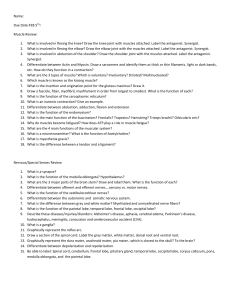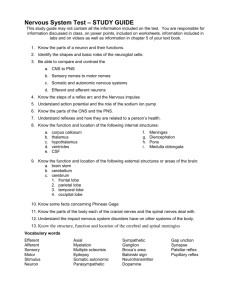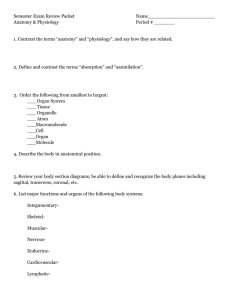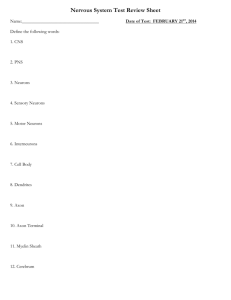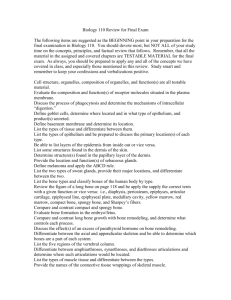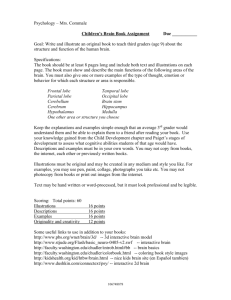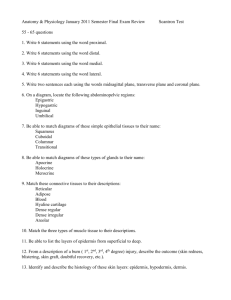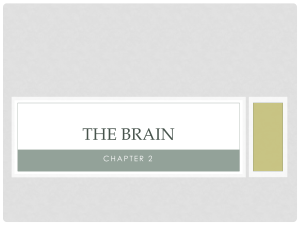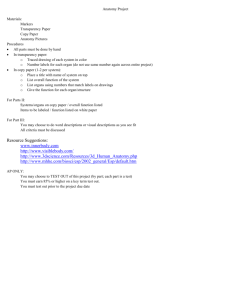Fall Semester Final Exam Study Guide
advertisement
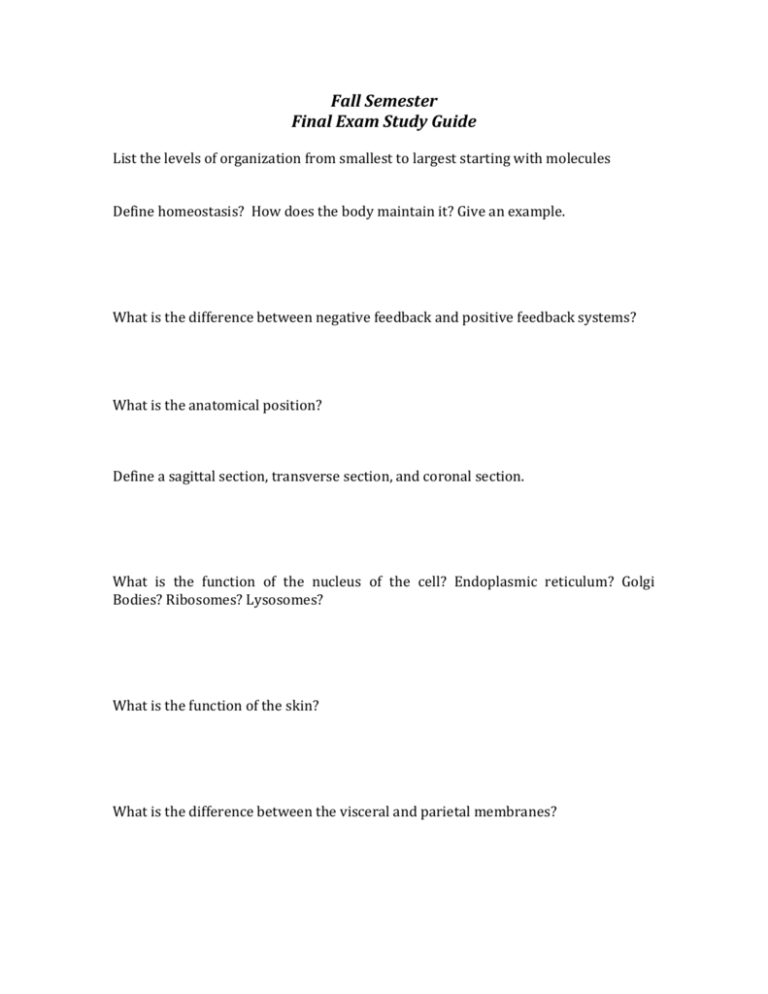
Fall Semester Final Exam Study Guide List the levels of organization from smallest to largest starting with molecules Define homeostasis? How does the body maintain it? Give an example. What is the difference between negative feedback and positive feedback systems? What is the anatomical position? Define a sagittal section, transverse section, and coronal section. What is the function of the nucleus of the cell? Endoplasmic reticulum? Golgi Bodies? Ribosomes? Lysosomes? What is the function of the skin? What is the difference between the visceral and parietal membranes? Complete the table listing the four basic tissue types, their functions, and general locations. Tissue Epithelial Function Locations Connective Muscle Nervous What are the three types of muscle tissue? List locations and whether they are under voluntary control or not. Differentiate between serous, mucous, and synovial membranes. Differentiate between apocrine, holocrine, eccrine, and sebaceous glands found in the integumentary system. What are the layers of the epidermis? Do you find all layers on every part of your body> Draw a sarcomere found with skeletal muscle labeling the Z line, M line, A band, I band, H zone, actin filaments, myosin filaments, and titin protein. What is cerebrospinal fluid and where can it be found? Describe the pathway of CSF flow in the CNS. Which cells produce myelin in the CNS? PNS? What is the function of myelin? Type of conduction it provides. Create a flow chart organizing the nervous system into its smaller groups. What does the term transmembrane potential mean? What is the difference between afferent and efferent nerves? Describe the steps that occur when an action potential occurs in a neuron using the figure below. Define the following segments of the spinal cord: cauda equine, filum terminale, conus medullaris. How many pairs of spinal nerves are found in each section of the vertebral column? Describe the function of the following neurotransmitters: acetylcholine, serotonin, dopamine, norepinephrine, and gamma-Aminobutyric acid (GABA). Describe the functions of the following parts of the brain: Corpus Callosum Diencephalon Hypothalamus Cerebellum Medulla Oblongata Pons Thalamus Midbrain Frontal Lobe Temporal Lobe Occipital Lobe Parietal Lobe Describe the following abnormalities: Parkinson’s Disease Alzheimer’s Disease Osteoporosis Multiple Sclerosis Basal cell carcinoma Gigantism Pituitary Dwarfism What are the functions of bone? Differentiate between osteoblasts and osteoclasts. Differentiate between compact bone and spongy bone. Describe referred pain. Cranial Nerves and functions: I II III IV V VI VII VIII IX X XI XII * SEE EXAM 6 STUDY GUIDE FOR REST OF INFO!!
